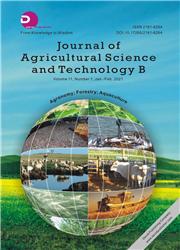Critical Soil Phosphorus Values for Yield Reduction in Intensive Agricultural Systems
引用次数: 2
Abstract
Phosphorus (P) is an essential element for agricultural production. Over-fertilization during decades caused an accumulation of P in soils leading to eutrophication in regions characterized by intensive agriculture. These environmental concerns together with the non-renewability of P resources have led to a more sustainable P use. Knowledge about the P need of crops is essential for a sustainable agriculture thereby minimizing P losses to the environment without lowering the yield substantially. Therefore, in this study, critical soil P values for yield reduction (PCrit) were determined based on fertilizer trials conducted between 1970 and 1988 and more recent fertilizer trials (2016-2017). At rotational level a common PCrit value of 109 mg P/kg dry soil (in an ammonium lactate and acetate extract) was determined. Crop specific PCrit values were also determined for seven crops (potato, winter wheat, barley, rye, maize, sugar beet and temporary grassland). These critical values ranged from 59 mg P/kg dry soil to 164 mg P/kg dry soil with winter wheat the least and maize the most sensitive towards P deficiency. The diversity in PCrit values among crops can mainly be explained by the root intensity but also rooting depth, exudation of organic acids and phosphatases may influence the PCrit value. The soil pH also influenced the P availability significantly. Soils with a favorable pH had a significantly higher availability (i.e., lower PCrit value) for all crops compared to soils with a suboptimal pH. Critical soil P values might help to set up new or to evaluate current soil P in target zones used for P fertilizer recommendations.集约化农业系统中土壤磷的临界减产值
磷(P)是农业生产的必需元素。在以集约农业为特征的地区,几十年来的过度施肥导致土壤中磷的积累,导致富营养化。这些环境问题加上磷资源的不可再生性导致了更可持续的磷利用。了解作物对磷的需求对可持续农业至关重要,从而在不大幅降低产量的情况下最大限度地减少对环境的磷损失。因此,在本研究中,根据1970年至1988年进行的肥料试验和最近的肥料试验(2016-2017年)确定了减产的临界土壤P值(PCrit)。在旋转水平上,PCrit值为109 mg P/kg干土(在乳酸铵和乙酸酯提取物中)。还测定了7种作物(马铃薯、冬小麦、大麦、黑麦、玉米、甜菜和临时草地)的作物特异性PCrit值。这些临界值范围为59 ~ 164 mg P/kg干土,冬小麦和玉米对缺磷最不敏感。不同作物间PCrit值的差异主要与根系强度有关,根系深度、有机酸和磷酸酶的分泌也可能影响PCrit值。土壤pH对磷有效性也有显著影响。与pH值不理想的土壤相比,pH值适宜的土壤对所有作物都具有更高的有效度(即更低的PCrit值)。临界土壤P值可能有助于在目标区域建立新的或评估当前土壤P,用于磷肥推荐。
本文章由计算机程序翻译,如有差异,请以英文原文为准。
求助全文
约1分钟内获得全文
求助全文

 求助内容:
求助内容: 应助结果提醒方式:
应助结果提醒方式:


